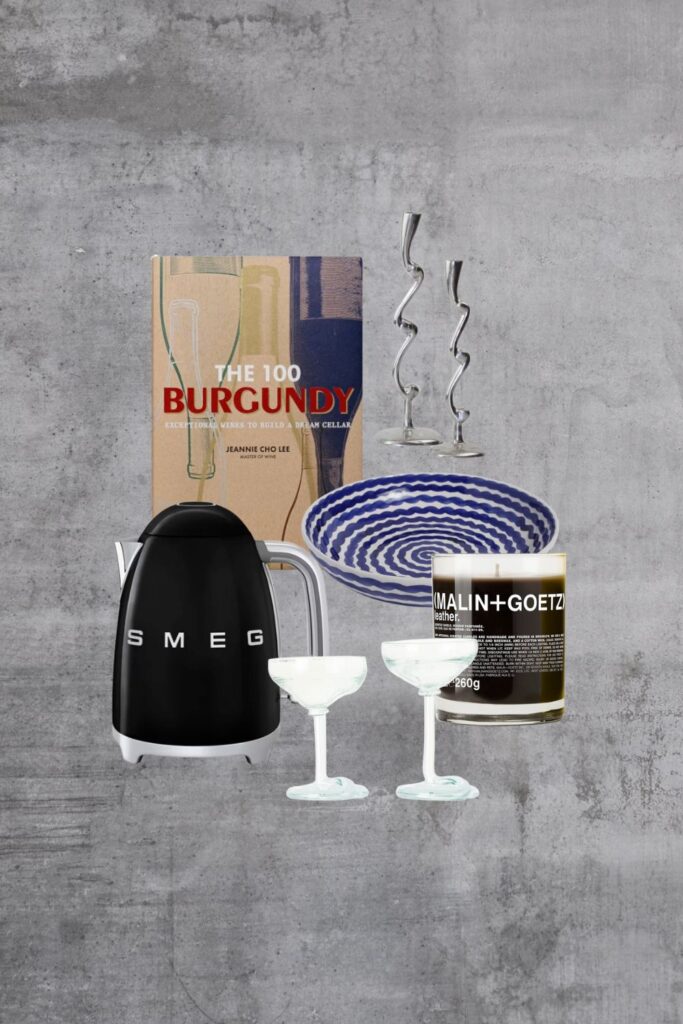
Decorating a small space can be both a challenge and an opportunity. Limited square footage often forces you to think creatively and make the most of every nook and cranny.
Whether you’re living in a cosy apartment, a compact studio or just a smaller room in a larger home, the right design strategies can transform your space into a stylish and functional oasis. After having moved around quite a few times myself, I’ve had my fair share of different-sized apartments, weirdly shaped rooms and awkward corners to work with.
I want to share with you some tips I’ve learnt over the years. From clever storage solutions to optical illusions that can make any room feel bigger, these styling hacks will help you maximise your space without sacrificing aesthetics. Read on for some practical tips and tricks that will turn your small space into a big success.
1. Go Vertical
With small spaces, it’s important to utilise height as much as you can. Decorating vertically will create the illusion of height, making any room seem taller and more spacious. There are many creative ways you can do this, from using patterned wallpaper to trick the eye to creating a gallery wall that spans upwards instead of out.
2. Scale Up
Don’t be afraid of scaling up! Contrary to popular belief, large furniture can make a small room feel bigger. Small furniture in a small space can make the room look cluttered and feel dollhouse-like. Instead of filling the room with lots of small items, opt for fewer, larger pieces. A large sofa or an oversized coffee table can anchor the room and make it feel grander. For instance, a large statement piece, like a chandelier or a large piece of art can create a focal point that draws attention away from the room’s size.
3. Large Mirrors
Mirrors are a tried-and-true trick for creating the illusion of more space. A large mirror reflects light and adds depth, making a room feel more open and airy. Place a mirror opposite a window to reflect the outdoors and bring more natural light into the room. To get the most out of this effect, opt for the largest mirror you can, or even a mirrored wall.
4. Layered Lighting
Layered lighting is essential in small spaces to create depth and warmth. Use a combination of ambient, task and accent lighting to illuminate the room from multiple angles. By positioning lamps in the far corners of a room, you can extend the room’s appearance and make it feel larger. Consider wall sconces, under-cabinet lighting and pendant lights to free up floor space while adding layers of light.
5. Large Rugs
Getting the right size rug might be the single most game-changing upgrade you can give your home. Make sure you get a rug that is large enough to extend under all the furniture. When a rug covers most of the floor, it creates a unified look that can trick the eye into seeing a larger space. Avoid small rugs that chop up the floor visually and make the room look disjointed. For narrow spaces, like hallways, choose runners that are both long and wide enough to cover the space, creating a continuous flow.
6. Extend Paint
This is a great trick when it comes to visual illusions. By painting the walls and the ceiling the same colour, you lose any harsh lines and the room blends into one. This technique eliminates the visual boundaries that can make a space feel confined. Stick to light, neutral colours to reflect more light and open up the room. Also, patterns are your friend. Oversized patterns on wallpaper or textiles work well because they make it harder for the eye to distinguish where the room starts and ends.
7. Rounded Shapes
Rounded tables, rounded chairs, rounded accessories, rounded everything! Round shapes make a space feel more fluid and less boxy. Curved lines guide the eye around the room smoothly, creating the illusion of a more open and spacious area. Plus, rounded shapes can help prevent the room from feeling overcrowded, as they take up less visual space compared to sharp, angular pieces. It’s a subtle change that can significantly enhance the overall flow and harmony of a room.
8. Multipurpose Furniture
Just as we like to carry a blusher and lip tint combo in our bag because it takes up less space, the same goes for decor. Look for pieces that offer storage solutions, like ottomans with hidden storage (plus, if you add a tray on top, the ottoman can act as a coffee table as well). Fold-out desks, extendable dining tables and convertible sofas can adapt to your needs and free up space when not in use. This type of furniture helps reduce clutter and keeps the room organised, allowing you to make the most of every square foot.
9. Forgo Overhead Storage
Overhead cabinets in kitchens have been a staple for so long that many believe they are a necessity — especially in a small space. The problem with overhead cabinets is that they can make a space feel cramped and overcrowded. Consider removing these bulky storage units altogether and opting for open shelving. Storing your dishes this way encourages you to keep your shelves organised, plus, everything is within easy reach.
10. Create Symmerty
When a room is symmetrical, it feels balanced and harmonious, which are important qualities to have in a small space. A few ways to create symmetry are by placing identical lamps on either side of a bed or hanging symmetrical art pieces on the walls. This will make a room feel intentional and create a sense of order. Symmetry can also help distribute visual weight evenly, making the space feel more cohesive and less cluttered.


